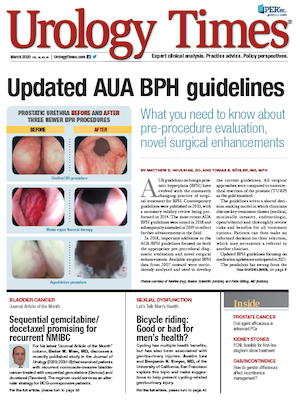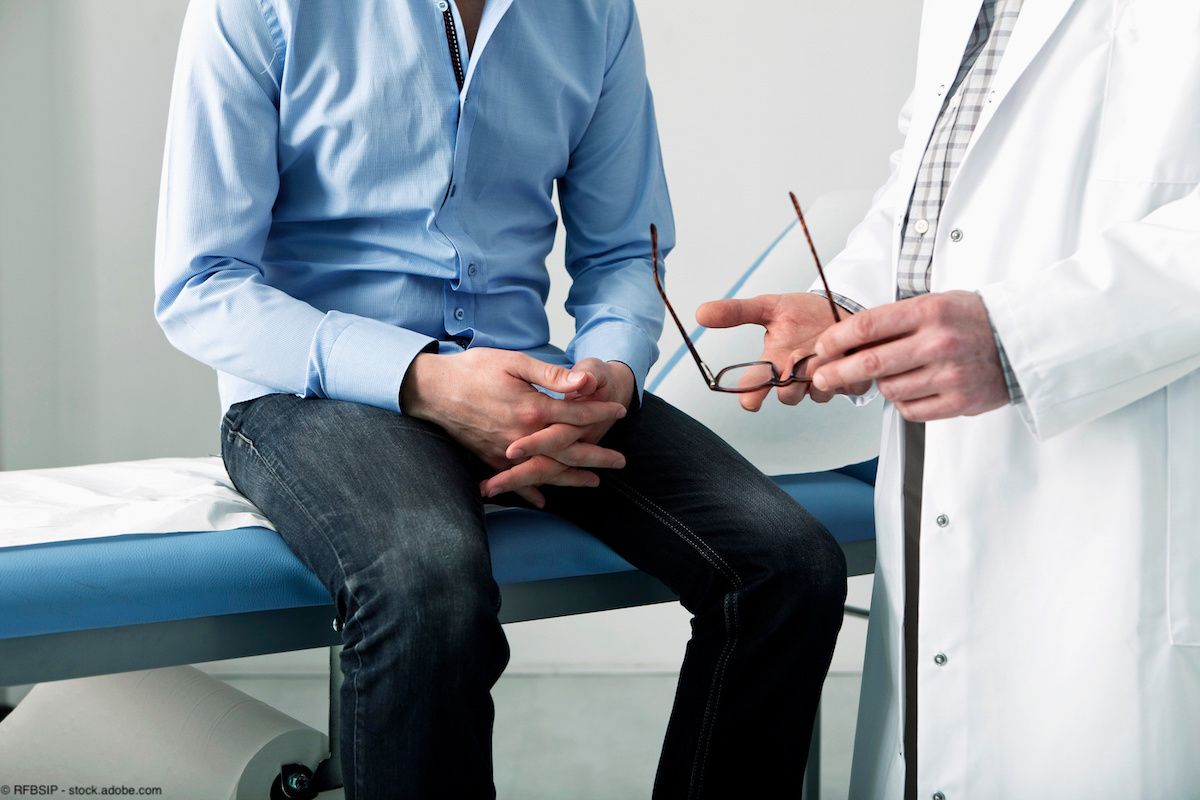Publication
Article
Urology Times Journal
Bicycle riding: Good or bad for men’s health?
Author(s):
Cycling has multiple benefits, and steps can be taken to prevent genitourinary injury.
Bicycling across the globe is increasing as a means of exercise and transportation. Clinicians need to be knowledgeable about the health benefits and risks of cycling so they can educate and care for their patients who ride.
The overall health benefits of cycling are tremendous. Cycling reduces the incidence of cerebrovascular accidents, coronary artery disease, hypertension, dyslipidemia, obesity, and diabetes mellitus. Strong inverse relationships have also been demonstrated between commuter cycling and all-cause mortality, cancer mortality, and cancer morbidity among middle-aged and elderly study participants.
Despite these benefits, cycling commonly leads to injury, with up to 85% of all recreational cyclists citing an overuse injury. Given unbalanced pressure distribution when on the bike, the neck, hands, wrists, lower back, knees, and perineum are the regions most frequently affected by cycling.
Cycling has been associated with genital numbness, priapism, infertility, elevated PSA, erectile dysfunction (ED), lower urinary tract symptoms (LUTS), and prostatitis. Several of the studies that posited these associations, however, were underpowered, did not use validated clinical outcomes, or had insufficient control group comparison. Consequently, the current data on cycling’s impact on urologic and sexual function continues to evolve.
Here, we explore particular aspects of men’s urologic health that are negatively impacted by cycling, review a proposed underlying mechanism of injury, and make specific management suggestions to help prevent cycling-induced genitourinary injury.
Impact of cycling on urologic health
Given controversies around the impact of cycling on sexual and urinary wellness, we conducted a large survey study assessing 3,932 male athletes (cyclists, swimmers, and runners) (J Urol 2018; 199:798-804). We found that low- and high-intensity cyclists had a higher Sexual Health Inventory for Men (SHIM) score, albeit clinically insignificant, than swimmers or runners. No statistically significant differences were noted between cyclists and non-cyclists in other validated measures of LUTS, including the International Prostate Symptom Score (IPSS) and NIH Chronic Prostatitis Symptom Index (NIH CPSI) (figure 1).

We identify a statistically higher odds of urethral stricture, genital numbness, and saddle sores (OR: 9.8, p<.001) in cyclists compared to swimmers/runners. Several other large studies corroborate that increased cycling frequency does not increase risk of ED, including the Massachusetts Male Aging Study (Int J Impot Res. 2001; 13:298-302) and the Cycling for Health UK study (Journal of Men’s Health 2014; 11:75-9), the latter of which surveyed 5,282 cyclists. In sum, these studies suggest that cycling does not result in worse ED or LUTS compared to swimming or running but may make one more prone to urethral strictures, genital numbness, and saddle sores.
In our cohort, cycling and genital numbness were closely linked (BJU Int 2019; 124:336-41). Increased years cycling, more frequent weekly cycling, and longer cycling distances per ride were all associated with an increased trend of genital numbness (figure 2). Body mass index and age were not related to odds of genital numbness. Interestingly, in a multivariate regression model with an outcome of ED, there was no statistically significant difference between cyclists with numbness and cyclists without numbness.

When numbness was stratified by anatomic region, cyclists with numbness over the buttock reported statistically worse SHIM scores compared to cyclists without buttock numbness (20.3 v. 18.4, p<.001). These findings suggest that increased cycling may increase risk of inducing perineal numbness, but that itself may not necessarily translate into worsened sexual function. Despite an unclear association, it is best to minimize numbness as much as possible while riding.
Microtrauma as potential mechanism of injury
Mechanisms to explain genital numbness in cyclists include perineal vascular compromise and pudendal nerve palsy. While the majority of studies have assessed how cycling affects perineal circulation, less is understood about the potential mechanism of pudendal nerve compromise. Traditional teaching suggests that pudendal nerve palsy is secondary to a static compressive process. However, cycling tends to be a dynamic exercise with constant pressure shifts on the perineum.
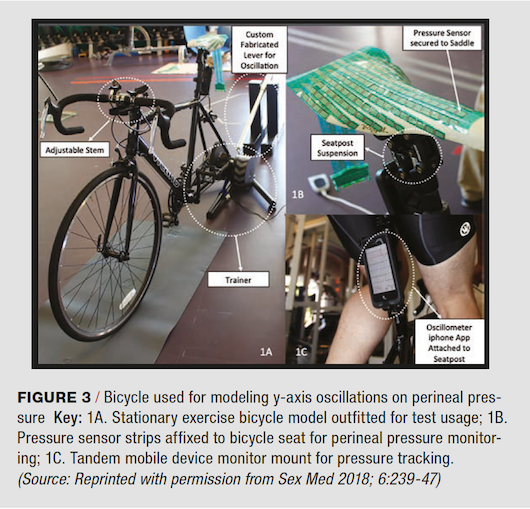
We sought to model the trauma a cycling commuter’s perineum experiences by creating a custom bicycle seat that measures pressure changes from simulated road trauma in the lab (figure 3). This is notable as it models real-world cycling where variations in repetitive force from navigating terrain (represented by oscillations in our study) can drive pressure to the pudendal nerve. A heat map of perineal pressure distribution indicated concentration of pressure on the ischial tuberosities and symphysis pubis in women and on the pubic rami in men (figure 4). We found that seat-post shock absorbers significantly decreased perineal pressure (57%-59% decrease, p<.01) (Sex Med 2018; 6:239-47).
Suggestions to avoid GU injury
In our cohort, even though numbness was not associated with increased ED, it makes sense to avoid numbness when possible. For the hobbyist or more serious cyclist, getting your bike professionally fit ensures optimal ergonomics and helps minimize trauma. Riding a bike that fits well is likely the single most important step riders can take to protect themselves from genital numbness.
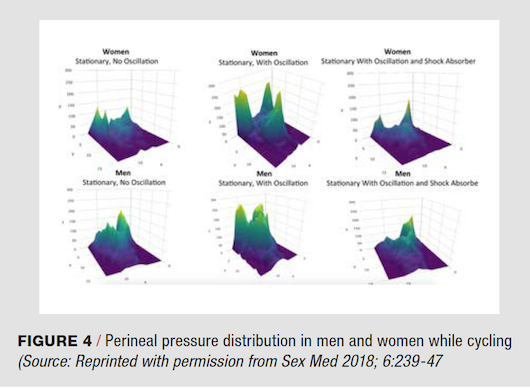
Bicycle modifications can potentially improve genitourinary outcomes after cycling. For example, in our cohort, cyclists who stood more than 20% of the time while cycling and adjusted the handlebar to a height at least even with the saddle had reduced odds of developing genital numbness. Furthermore, we showed that a modified seat decreased traumatic pressures delivered to the perineum.
Conclusion
The overall health benefits of cycling clearly outweigh the risks. With a global obesity epidemic leading to a high prevalence of cardiovascular disease, cycling should be promoted as a healthy form of exercise, transportation and recreation. We still have more to learn about the impact of cycling on urologic wellness in men, but ED appears rare in cyclists and no more common than ED seen in other athletes.

Austin Lee

Benjamin N. Breyer, MD, MAS
Mr. Lee is a medical student and Dr. Breyer is associate professor of urology, University of California, San Francisco.
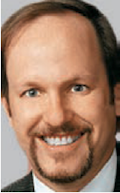
Section Editor Steven A. Kaplan, MD, is professor of urology at the Icahn School of Medicine at Mount Sinai and director benign urologic diseases, Mount Sinai Health System, New York. Follow him on Twitter at @MaleHealthDoc.
